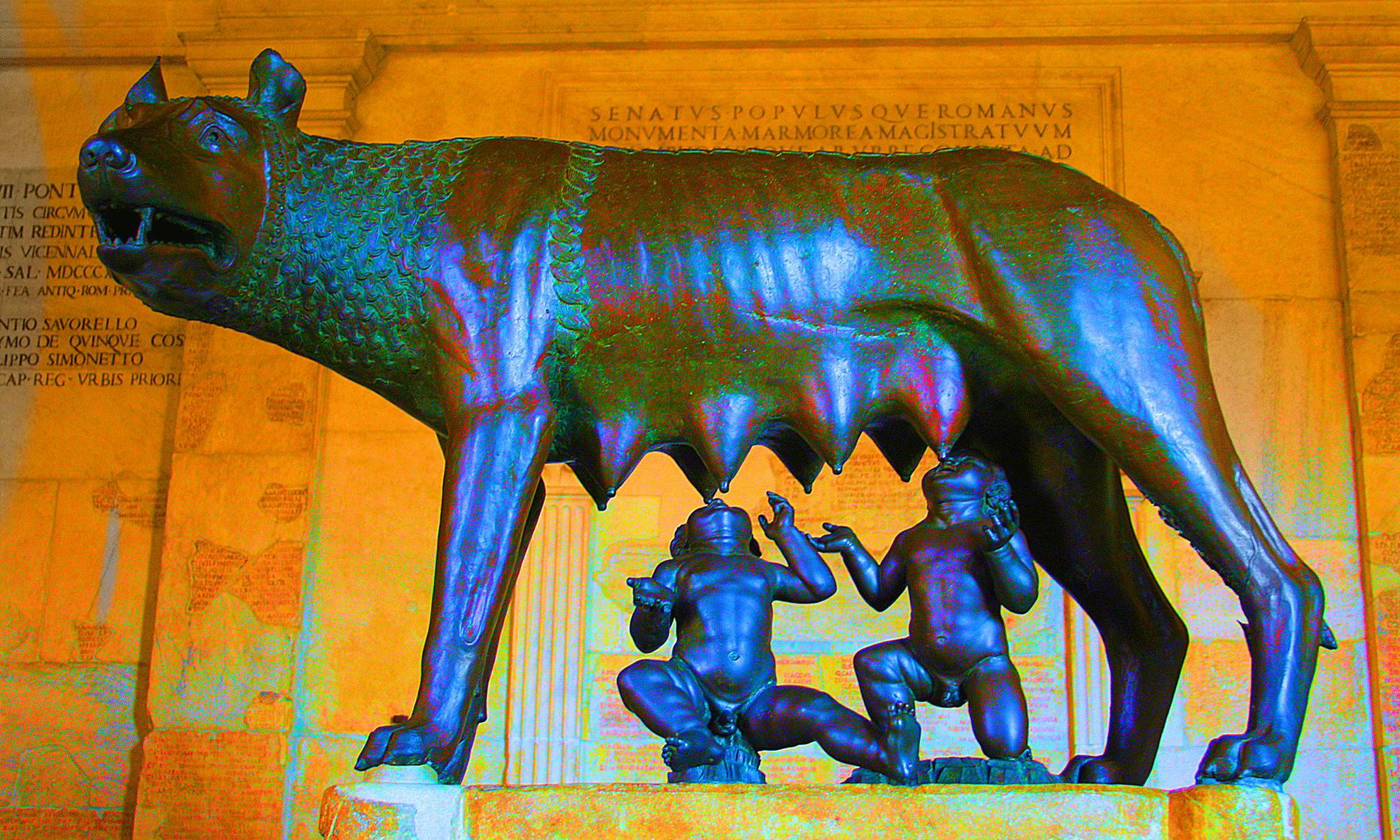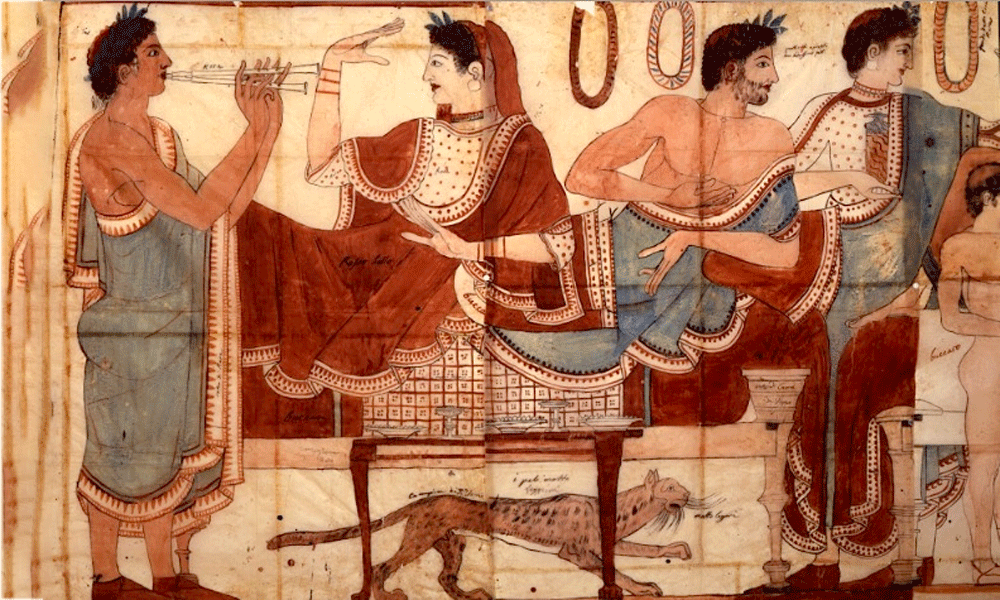
Eternal city, ancient culture that leads us again and again serves as a base to ours, Rome was not built in a day, they say. Yet it also says it’s in one day it was founded. Rome, we kept so many rules from and we know so little about: the major part of its arts and culture is lost !
Eternal city, ancient culture that carries us and serves as a base for ours, Rome was not made in one day, it is said. Yet it is also said that it was founded in a single day.
Rome, of which we have kept so many rules and of which we know so little: most of its culture is lost. Rome, heir to knowledge and observations that already date back to the dawn of time and were brought up to date by the genius of its engineers and scientists. Rome, the last link in the long chain of transmission that connects us to Atlantis and the glorious civilizations before the flood.
Rome and its legend
Rome, according to legend, was founded by two twin brothers, two wild children, named Romulus and Remus. Here is their story told by the Latins themselves. Then I will propose the decrypted version. Romulus and Remus are the twin sons of the vestal Rhea Silvia and the god Mars. Rhea Silvia is the daughter of a kinglet. The latter, fearing future rivals, ordered that the babies be thrown into the Tiber. But newborns are left in a basket on the river and then discovered under a wild fig tree by a she-wolf who feeds them. A woodpecker, the Mars bird, watches over them. There, we are played with the pipe. Too many symbols, too many borrowings, not enough authenticity.
The young Moses, according to legend, was also saved from the waters. Wicker cradles are called bassinets in memory of this story. Only Moses predates the twins of Rome. Here history does not repeat itself, but historiographers. Tite-Live and Plutarch report another version of the legend: the twins were discovered in the Lupercale cave by the shepherd Faustulus, guardian of the Amulius herds. He entrusted them to the good care of his wife Larentia, a prostitute whom the shepherds called Lupa, the wolf. Some naive or crafty Latin author has created the myth of the feeding wolf, which doubly puts the city under the sign of Mars the warrior. Breastfed by a wolf, it’s better than writing: raised by a whore.

The Etruscan source
One feels here the claw of the Empire that has not ceased to restore its legend. Beyond the mess borrowed from the Hebrews and others, the myth says that Rome was founded by two sources, hence the twins. Except that the two sources of Rome are false binoculars. The first source is Etruscan, historians know. The Etruscans are closely associated with Romulus and Rome. The Etruscan dynasty played a major role in the young kingdom: it is thanks to the Etruscan sovereigns that the modest town became a flourishing city-state from the 6th century BCEBefore the Common Era.
This Etruscan origin takes a special meaning for me: I think with Livy that the Etruscans came from the north, of hyperborean origin. We have seen the close links between Etruscan metaphysics and culture and the Yoruba thought of West Africa. I told how, after Atlantis was swallowed some 12,000 years ago, the Atlanteans left America for their native lands on the other side of the Atlantic Ocean. Among them were blacks and whites, in good intelligence and mutual respect.
Etruscans and Yoruba
The Black Gods of America returned to the Yoruba Country, while the White Gods founded the Western Empire at the site of the present North Sea. Several white groups scattered on the coasts of Europe: Tuatha of Ireland, Basques, Ligures, Catalans, Corsicans… and our famous Etruscans, who were a mixed group where blacks and whites were equal. It was thus this people, heir to Atlantean science, much of hydraulic know-how and doubtless other technologies, who served as tutor in Rome.
We know little about the Etruscan civilization, however it left us “very many inscriptions: of the order of 10’000. This is enormous, considering that this civilization has only transmitted written testimonies to us for a relatively short time–between the beginning of the 7th century BCE, the date of our first inscriptions, and the end of the 1st century BCE. By way of comparison, we can recall that, for the same chronological interval, we have only about 3000 Latin inscriptions.” (source)
Either the Etruscans were graphomans or the first Romans were illiterate. I am inclined to the second hypothesis. In the myth that concerns us, that of Romulus and Remus, the Etruscan presence is everywhere. We find her even in the fairy godmother who leans on the cradle – or rather on the moses – of the twins: the Food Wolf. The founders of Rome were fed by the wolf, they are the sons of the Wolf Clan. We identify here the Atlantean filiation through the Tuatha of Hyperborea, then the Etruscans, also direct heirs of the People of the Sea. But the biggest discovery is yet to come.

This illustration shows knights of the People of Dana Ann going to war. I want to highlight the ornaments of their helmets: A snake, a dragon and ram horns. The People of the goddess Dana Ann belonged to the Serpent People, they came from the ancient Dragons and belonged to the troops of Rama, the Ram of Hyperborea. That’s how even helmets can talk.
The Rama Source
Better still, the Etruscans are heirs of the tolerance and openness of the Atlanteans, in whom the coexistence of races has never been a problem. Most of the social difficulties were overcome by the sacred application of the system of four colleges or castes: the college of producers, that of merchants, that of warriors and that of formators. All human activity is thus harmonized.
The caste system, inherited from Atlantis and conveyed by Rama, became corrupted in India where the horizontal exchange became a vertical hierarchy, crumbling the four colleges into an infinity of sub-castes and non-castes opposite to the original Ramaic philosophy.
But the question arises: Roma and Rama are identical to one letter: the first vowel of the word. But the Etruscans did not note the vowels. So we can say that the two names are identical. Roma is the western city of Rama. Not that he lived there, his death predates the presumed foundation of Rome. Let’s say that the city was dedicated to him. And by whom? If not Romulus and Remus.
Rama the conqueror was affiliated not with the clan of Aries, but with that of the Wolf. Double wink to Lupa the whore and the Wolf Clan dear to the people of Dana Ann. And speaking of Roma, since this is the real name of the eternal city, put it upside down. Yes, it’s amor…
Quarrel between historians
In Roman times, historians did not agree with each other. Already! Since these eternal quarrels have only grown and embellished. Plutarch thus recounts the facts: “This great name of Rome, where does it come from? There is disagreement on this point between historians. According to some, the Pelasgians, having wandered over most of the inhabited land, settled there. They gave their city the name of Rome because of the strength (romeo) of their weapons.” (source)Plutarch, Parallel Lives, Gallimard 2001, page 89
The Pelasgian is the other name given to the Peoples of the Sea, which are the different waves of invaders who ravaged the Mediterranean basin before embarking on the conquest of the whole planet, as Plutarch recalls. The Pelasgians came from Celtia and the Four Northern Islands. They can be likened to the Tuatha de Dana Ann, but whatever their name is, they are above all the troops of the great Rama, the first emperor of the world.
We know that Rama had before gods a terrifying arsenal. The Pelasgian made the powder talk. They are the ones who introduced the use in China. So that their city is called Rome could well come from romè, the strength of their weapons. However, since only one vowel separates Rama from Roma, I maintain the hypothesis that Rome is a tribute to Rama, even if the Greek and Latin historians of antiquity had already forgotten its name.
The technique and use of powder had been known in China since the arrival of Rama the civilizer. We can see in him the first Buddha that the Chinese consider mythical. Rama is not. As for lightning, let us salute the Chinese genius who knew how to reserve the use of it for celebration and rejoicing, while the West used it to kill. In China, the powder only made firecrackers and fireworks — great wisdom of this ancient people.

The other hypothesis
Let us go back to Plutarch’s story and the quarrel of ancient historians. “Other historians claim that, during the capture of Troy, some inhabitants managed to escape; they found ships and, pushed by the winds, boarded in Etruria, where they cast anchor near the Tiber.” (source)Plutarch, Parallel Lives, Gallimard 2001, page 89
The Trojan hypothesis is interesting, though unlikely. Like Trojans, defeated by the Pelasgians, would they have had the foolish idea of going to settle in lands already conquered by the latter? This is what is called throwing oneself in the mouth of the wolf. Or rather, the Wolf… This is where this version takes all its salt.de sea? Troy is Rama’s greatest victory. What a good idea to choose it as the source of the city par excellence! It is still a disguised way of invoking without naming the Ramaic filiation.
Why do we try so hard to hide this source of Rama? Because the Pelasgians did not have good press. To claim their ancestry would have been in very bad taste. But to be content to allude to it, even indirectly, is proof that if history is a liar, its lie often involves a part of truth to whom can read between the lines and make the necessary connections.
The Role of Remus
Before closing this chapter, I would like to come back to the first version of the myth, the one still taught in schools. It seems to be the most false, yet it also contains its share of truth. Why are there two twin brothers? Finally the only one who founded the City par excellence is Romulus. The other brother is useless. Wait to see? What’s his name again? Remius? Ah, but it changes everything! What are the names of the inhabitants of Reims? Remius. Remius comes from Reims.
Reims where Rome is still everywhere: City of Sacres. Gate of Mars. Cardo Maximus. “Castle gate-march”… And I will add the city of champagne that waters all great events, all sacres and coronation. Too bad it wasn’t invented in the time of the mythical twins…
Reims is the sacred city above all others, for it was in this city that the kings of France were sacred. And not that of France apparently. Rémus is from Reims. He supports his twin, he consecrates him, he gives him all authority to become the founder and the first king of Rome. Through Reims, Rome is softened. And as long as the sacred presides over the sacredness, his reign will have no end.


